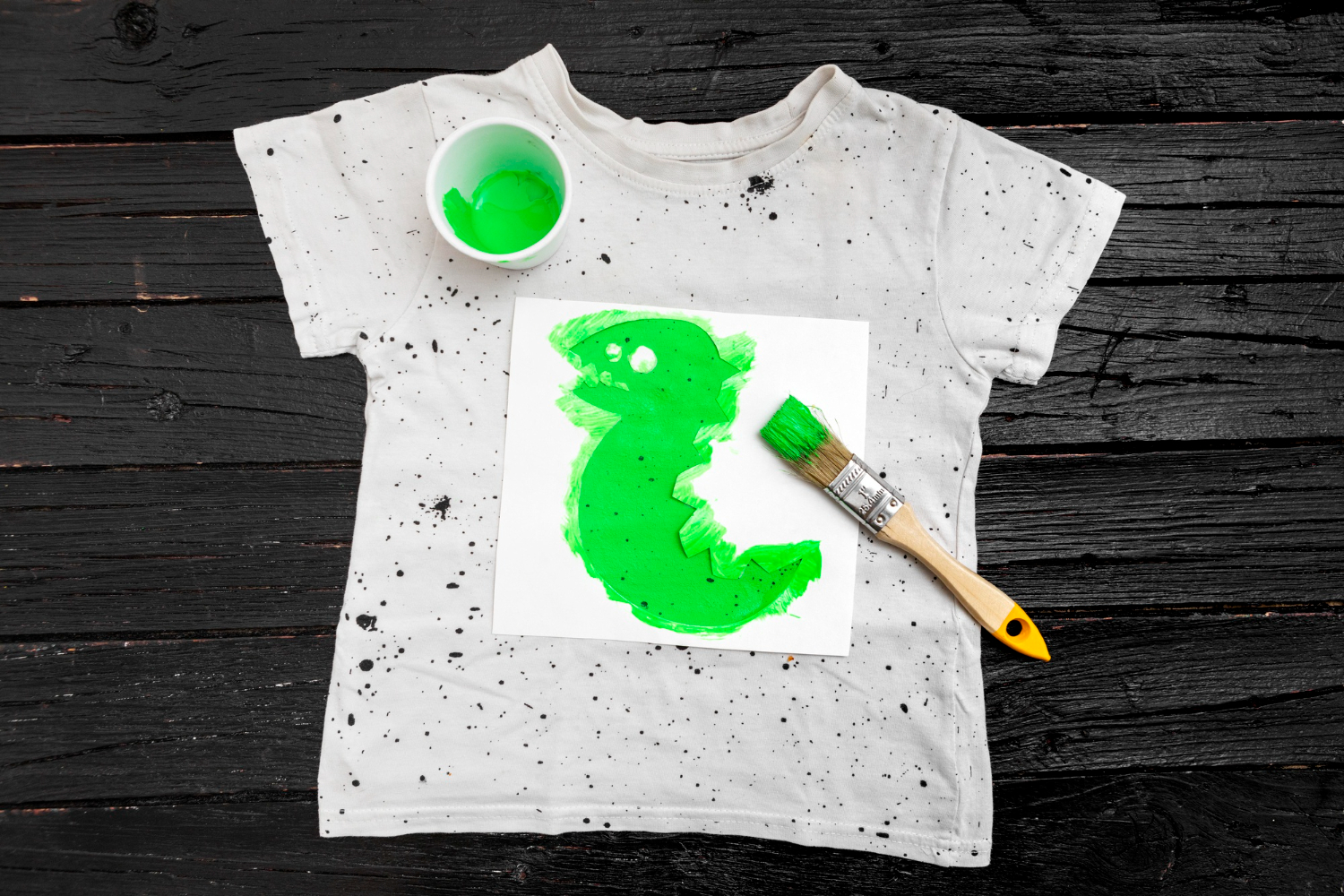How to get gasoline out of clothes. Gasoline stains on clothes can be a pesky and intimidating problem to tackle. Whether you’ve accidentally spilled fuel on your favorite shirt or had a mishap at the gas station, the good news is that there are effective methods to remove gasoline stains without the need for expensive dry cleaning. In this guide, we will explore how to get gasoline out of clothes, step by step, using readily available materials.
Presenting the challenge
It is well known that gasoline stains can thoroughly penetrate fabric fibers, leaving behind ugly stains and odors that last for a long time. These stains are difficult to get rid of since they stick to the cloth so tenaciously. Because gasoline contains a blend of hydrocarbons and additives that make it sticky and stain-prone, it quickly penetrates into the fibers of clothing when it comes into touch with it. Due to its flammability, gasoline can cause visible marks and strong scents, posing a safety issue. Thus, it is essential to remove gasoline stains quickly and properly for both aesthetics and safety.
Materials Needed
Before you begin, gather the following materials:
- Clean cloths or paper towels
- Dish soap or liquid laundry detergent
- Baking soda or cornstarch
- White vinegar
- An old toothbrush
- A bucket or sink
Immediate Steps to Take
When gasoline spills on your clothing, it’s crucial to act quickly. Follow these immediate steps to minimize the damage:
- Safety First: Ensure you are in a well-ventilated area away from open flames or sparks.
- Blot, Don’t Rub: Use a clean cloth or paper towel to blot the affected area. Avoid rubbing as it can spread the stain.
- Remove Clothing: If the gasoline has soaked through, remove the clothing to avoid skin contact and further contamination.
- Isolate Stained Area: Isolate the stained area from the rest of the garment, preventing the spread of the stain.
Mastering Stain Removal: Your Step-by-Step Guide
Let’s dive into the detailed process of how to get gasoline out of clothes.
Pre-treatment of Stains
- Scrape Off Excess Gasoline: Use a dull knife or a spoon to gently scrape off any excess gasoline.
- Blot with Paper Towels: Blot the stain with paper towels to absorb as much gasoline as possible.
Using Common Household Items
- Dish Soap Solution: Mix a solution of one part dish soap and two parts warm water. Apply it to the stain, gently rubbing it with an old toothbrush.
- Rinse and Repeat: Rinse the stained area with cold water, then repeat the process until the stain lightens.
Specialized Stain Removers
- Baking Soda or Cornstarch: If the stain persists, sprinkle baking soda or cornstarch on it, allowing it to absorb the gasoline. Brush off the powder after a few hours.
- White Vinegar: For stubborn stains, apply white vinegar to the area, let it sit for 15 minutes, then rinse thoroughly.
Dealing with Stubborn Stains
- Enzyme-based Stain Remover: Use an enzyme-based stain remover for tough, set-in stains. Follow the product instructions.
- Washing Machine: Machine wash the garment on the hottest water temperature suitable for the fabric. Check the stain before drying. Avoid using a dryer if the stain remains.
Hand Washing
- Hand Washing: If the clothing is delicate or not machine-washable, hand wash it using a gentle detergent and cold water. Rinse thoroughly.
Checking for Residue
- Inspect for Residue: Before drying, check for any residue. If the stain is still visible, repeat the stain removal process.
Additional Tips
- Avoid Heat: Do not use hot water or heat sources like iron on a gasoline stain, as it can set the stain.
- Air Dry: After washing, air dry the garment to ensure the stain is completely gone.
Preventing Gasoline Stains
- Handle Gasoline with Care: To avoid future stains, handle gasoline containers with care and be cautious when refueling.
Additional Steps
Now, let’s delve into more steps of how to get gasoline out of clothes.
Blot with Rubbing Alcohol
- Rubbing Alcohol Application: Apply a little amount of rubbing alcohol to the stain and then use a clean towel to gently wipe it. The gasoline residue is broken down in this process. After that, thoroughly rinse the area.
Hydrogen Peroxide Application
- Hydrogen Peroxide Solution: Combine three parts water and one part hydrogen peroxide. The stain should be treated with this solution and then left to sit for a while. Clearly rinse. White clothing benefits greatly from this technique.
Use Ammonia Sparingly
- Ammonia Application: Although ammonia can be a powerful stain remover, it should only be used under supervision. Apply a solution of one part ammonia to two parts of water, work it into the stain, and then thoroughly rinse. Ammonia shouldn’t be used on delicate or colored materials because it could fade them.
General Tips for Removing Gasoline Out of Clothes
As we wrap up our guide, here are some general tips and precautions to keep in mind when dealing with gasoline stains:
- Safety First: Always prioritize safety when handling gasoline stains. Work in a well-ventilated area and away from open flames or sparks.
- Prompt Action: Act quickly when a gasoline stain occurs. The faster you address it, the easier it is to remove.
- Test in an Inconspicuous Area: Before applying any stain remover or cleaning solution, test it on an inconspicuous area of the fabric to ensure it doesn’t cause discoloration or damage.
- Avoid Heat: Do not use heat sources like an iron or a dryer on a gasoline-stained garment, as it can set the stain.
- Professional Help: For valuable or delicate clothing, or if the stain persists despite your efforts, consider seeking professional dry cleaning services.
By following these guidelines, you can effectively remove gasoline stains from your clothes, ensuring that they look and smell fresh once again. Remember that patience and the right materials are key to success in this stain-removal process.
Tips and Tricks of How To Get Gasoline Out of Clothes.
Dealing with gasoline stains can be challenging, but with the right tips and tricks, you can effectively remove them. Here are some valuable strategies to help you tackle gasoline stains on clothing:
- Quick Action: Act promptly when a gasoline stain occurs. The faster you respond, the easier it is to remove the stain. Immediate action prevents the gasoline from penetrating deeper into the fabric.
- Test in an Inconspicuous Area: Test any stain remover or cleaning solution on a hidden area of the fabric before using it everywhere. By taking this care, you may be confident that the treatment won’t harm or discolor your clothing.
- Use Common Household Items: Gasoline stains may be effectively removed with common household materials. Dish soap, baking soda, and white vinegar are accessible materials that work well to remove stains.
- Safety First: Always prioritize safety when handling gasoline stains. Work in a well-ventilated area and away from open flames or sparks. Safety is paramount when dealing with a flammable substance like gasoline.
Pros of Dealing with Gasoline Stains
Pros
- Quick Action: Acting promptly when a gasoline stain occurs makes it easier to remove the stain. Immediate action prevents the gasoline from penetrating deeper into the fabric.
- Test in an Inconspicuous Area: Testing any stain remover or cleaning solution on an inconspicuous part of the fabric ensures that the treatment won’t cause discoloration or damage to your clothing.
- Use Common Household Items: Everyday items like dish soap, baking soda, and white vinegar can be effective in removing gasoline stains. They are readily available and budget-friendly.
- Safety First: Prioritizing safety when handling gasoline stains is crucial. Work in a well-ventilated area and away from open flames or sparks to prevent accidents, given gasoline’s flammability.
Cons
- Stubborn Stains: Gasoline stains can be particularly difficult to get rid of, frequently requiring several efforts. When attempting to remove stains, be persistent and patient.
- Odor Lingers: The clothing may still smell like gasoline even after the stain has been removed. To get rid of the stink, you might need to take extra measures like washing with scented detergents or utilizing odor removers.
- Potential Damage: The chemicals in gasoline can damage delicate or sensitive fabrics. Caution is needed when treating such materials, as aggressive stain removal methods may harm the fabric.
Conclusion
In conclusion, while gasoline stains on clothes can be challenging, following the right steps and using common household items can help you effectively remove them. Acting promptly and being patient in the stain removal process is key. Remember to take safety precautions and handle gasoline with care to prevent future mishaps.
Frequently Asked Questions
Q: Can I use any type of dish soap for stain removal?
A: Yes, you can clean up gasoline stains with any mild dish soap.
Q: Is it safe to use an enzyme-based stain remover on all fabrics?
A: Most fabrics can safely use enzyme-based stain removers. Nevertheless, it’s wise to constantly read the care label on your garment.
Q: What should I do if the stain is still visible after washing?
A: Repeat the stain removal procedure if the stain does not go away, or for delicate textiles, seek professional assistance.
Q: Can I machine dry the garment after removing the gasoline stain?
A: After getting rid of the stain, it’s best to let the clothing air dry to make sure it’s totally dry.
Q: How can I prevent gasoline stains in the first place?
Seek Out More Articles: How to Get Expo Marker Out of Clothes



